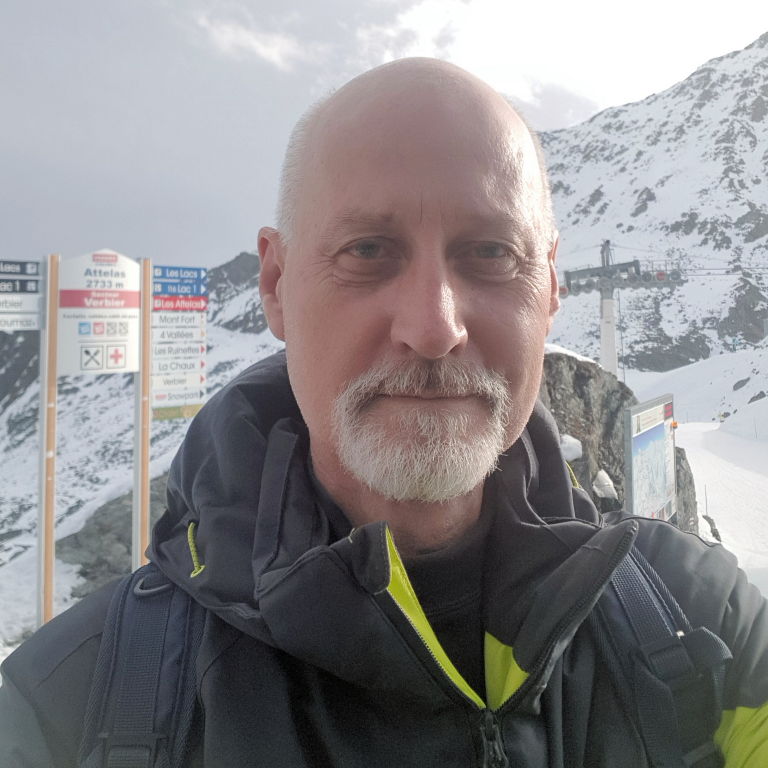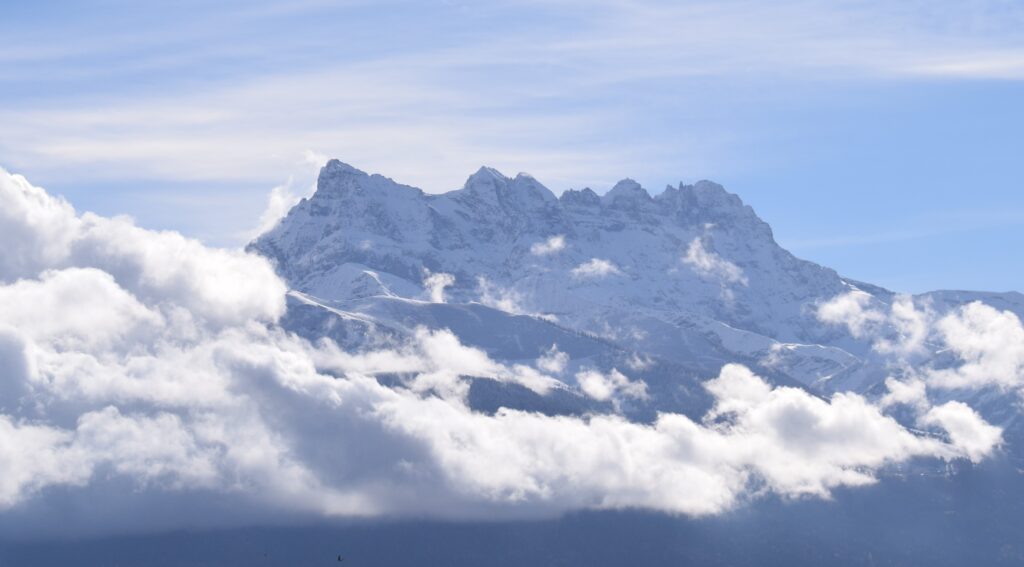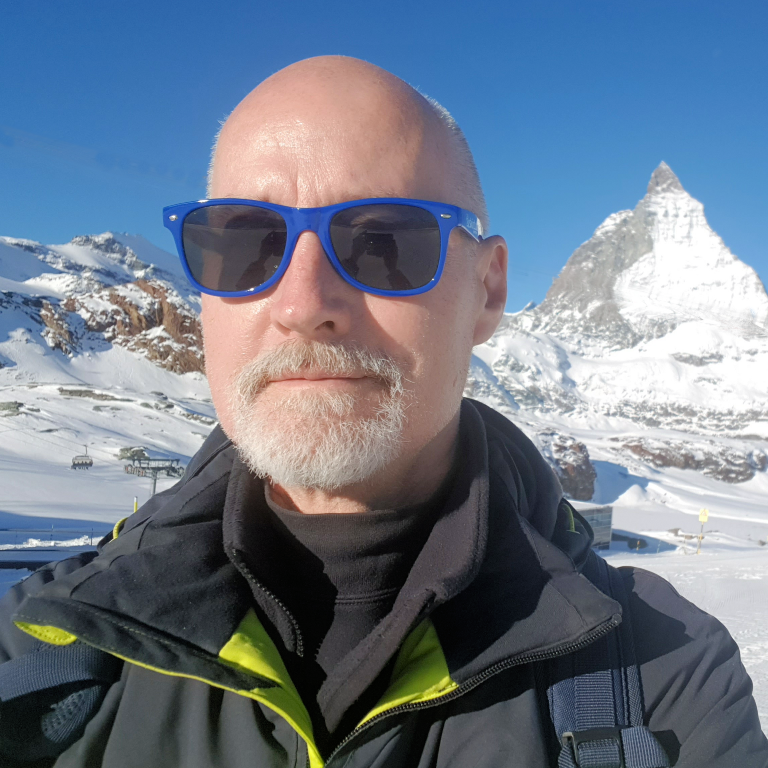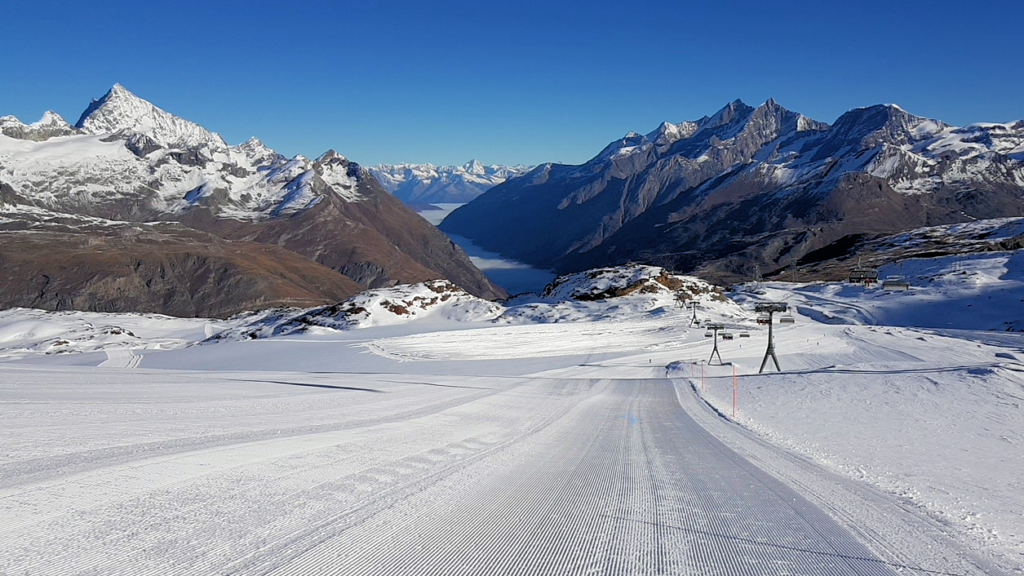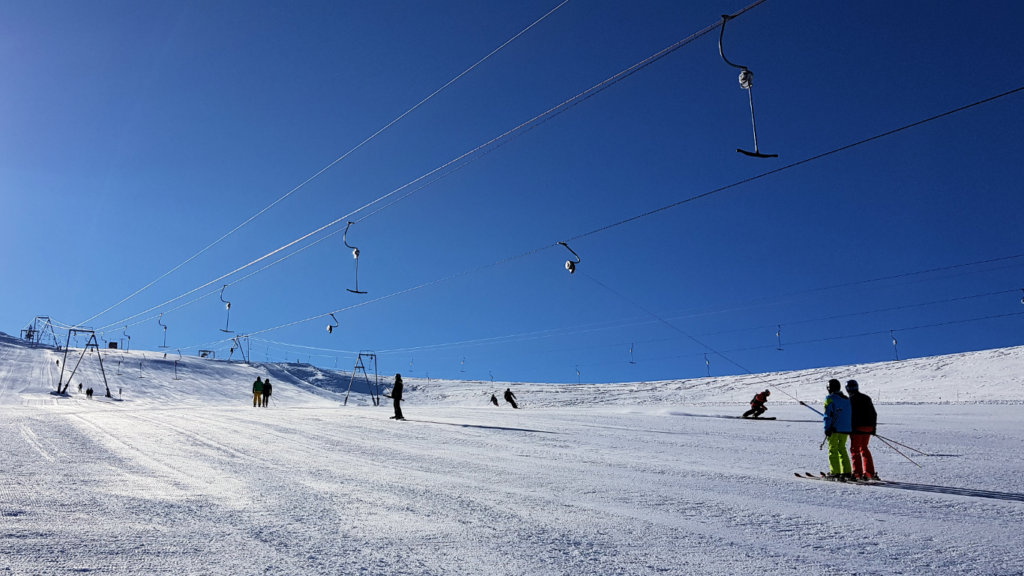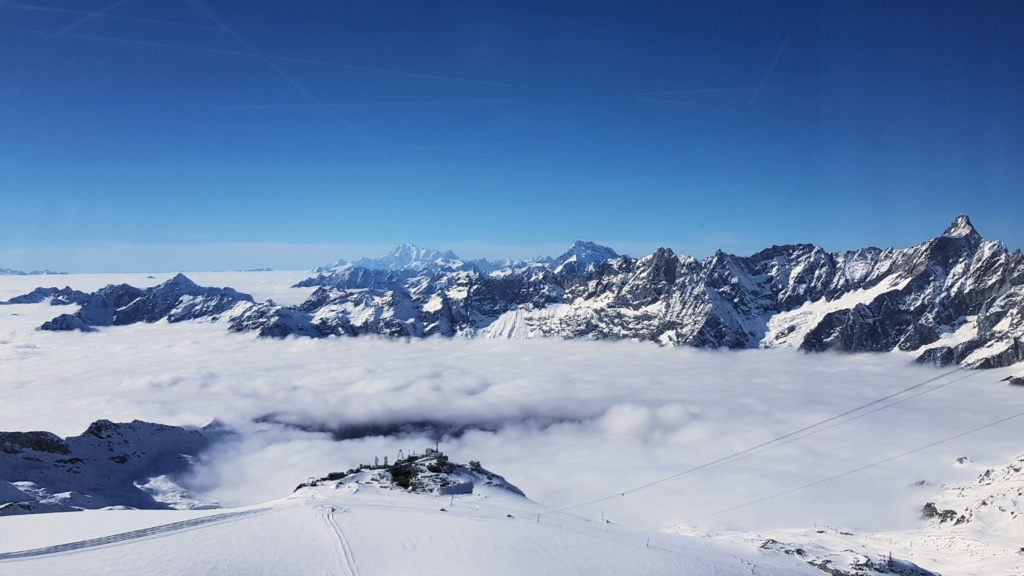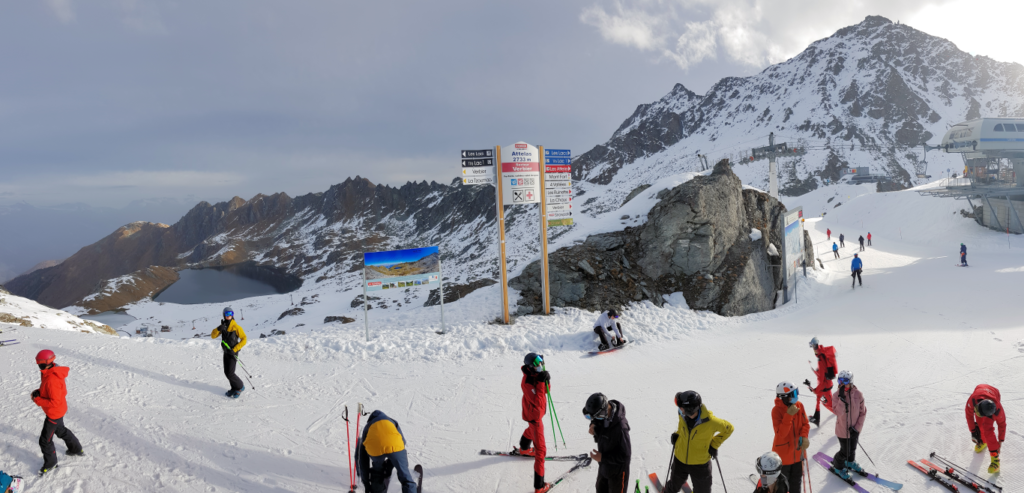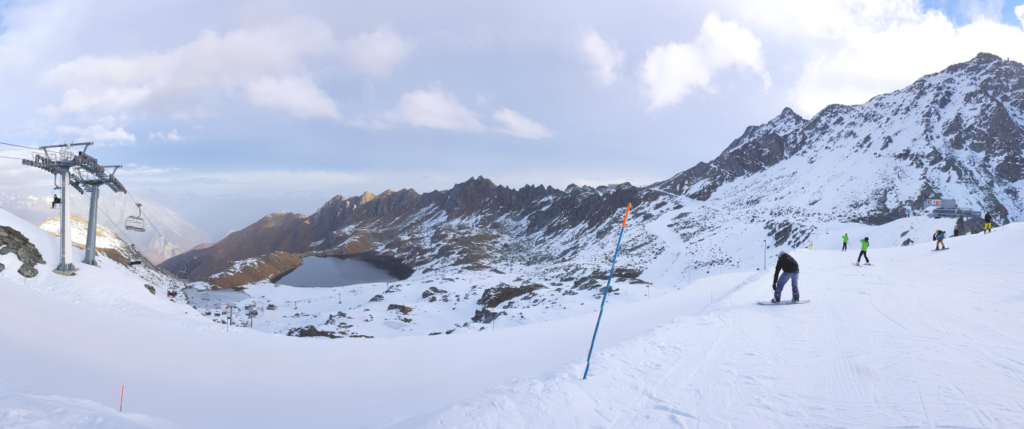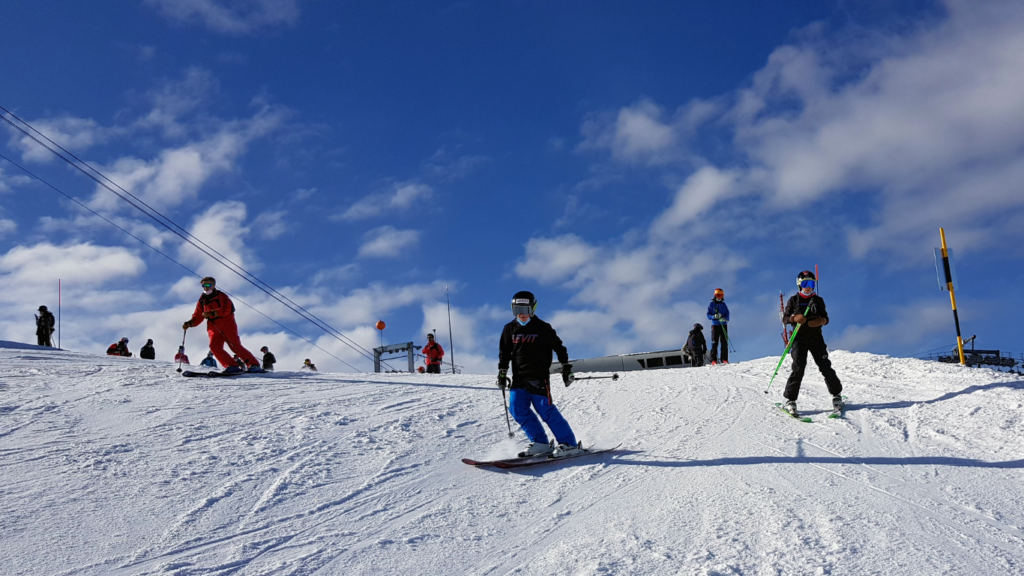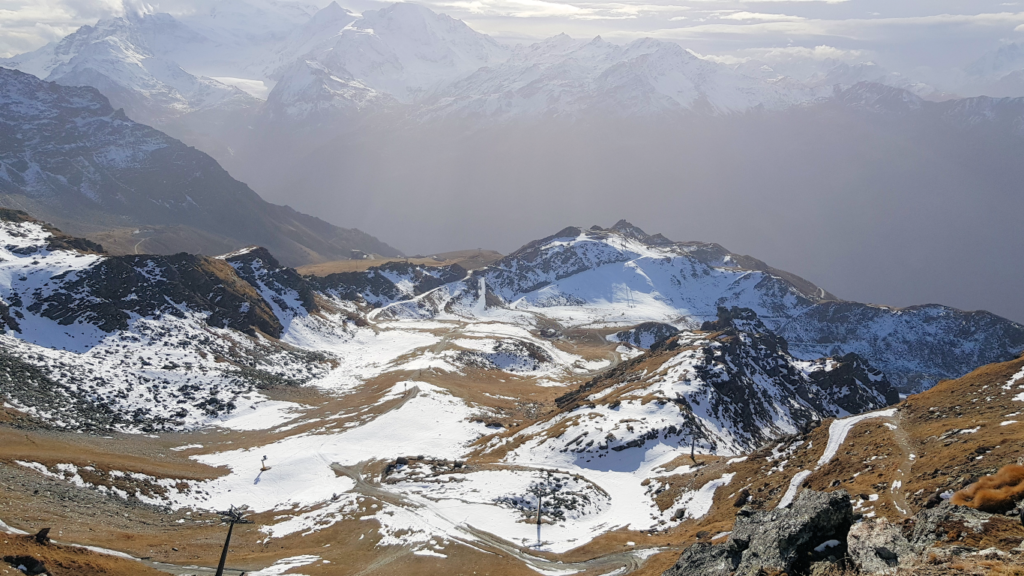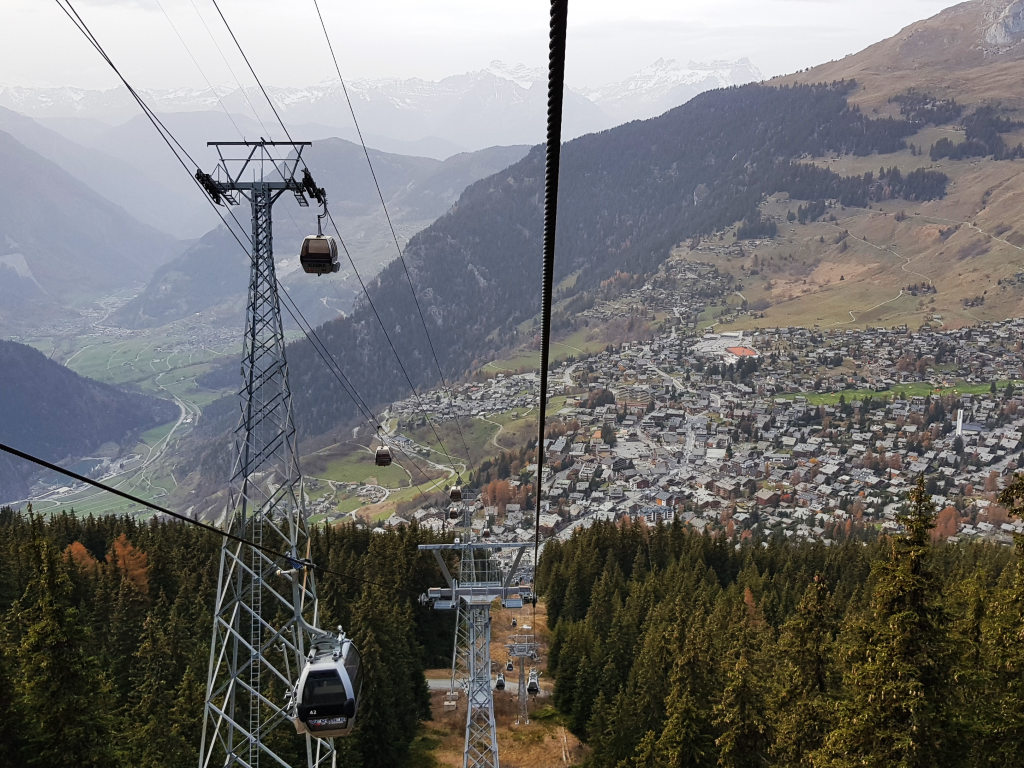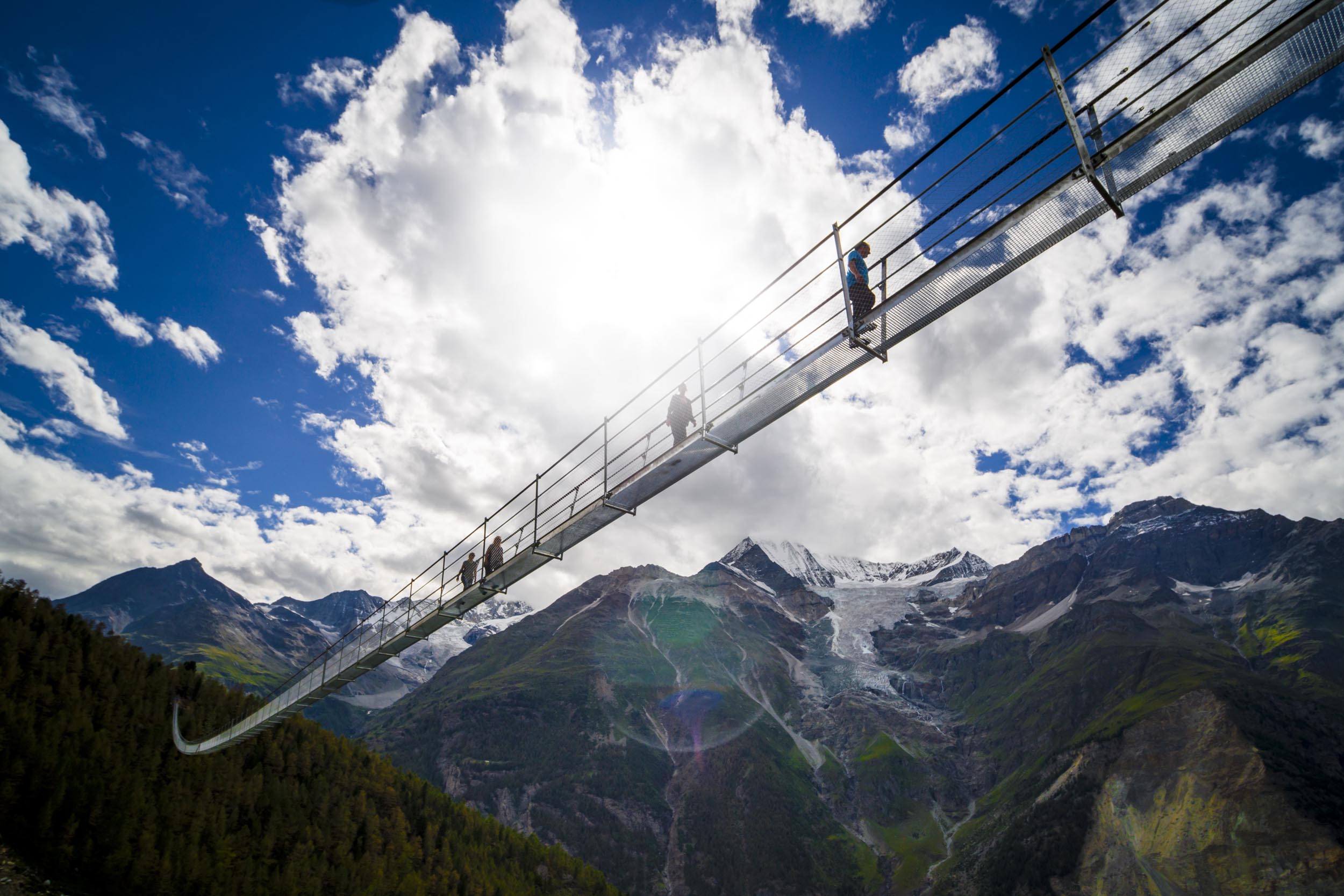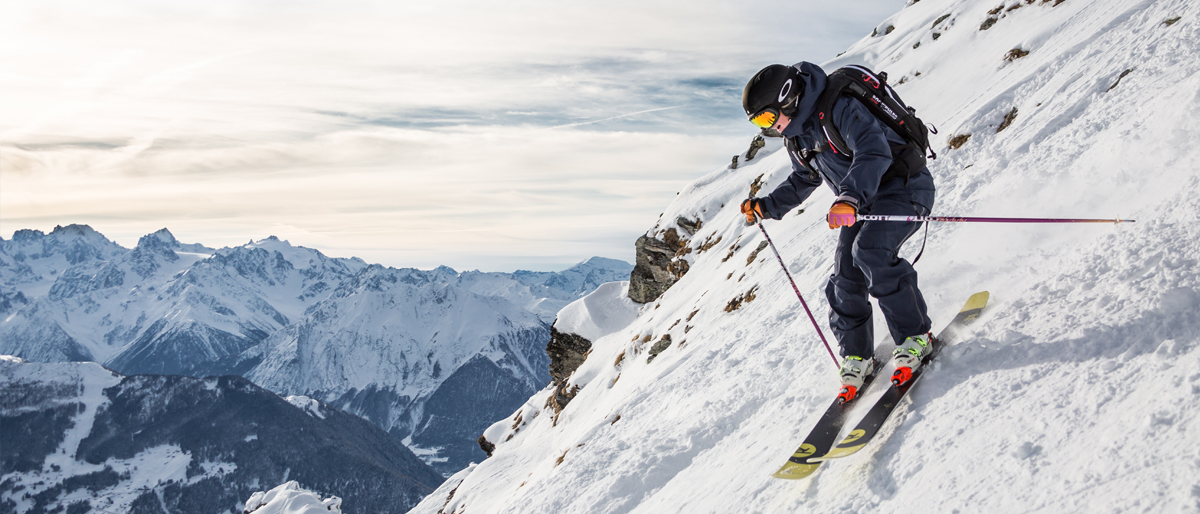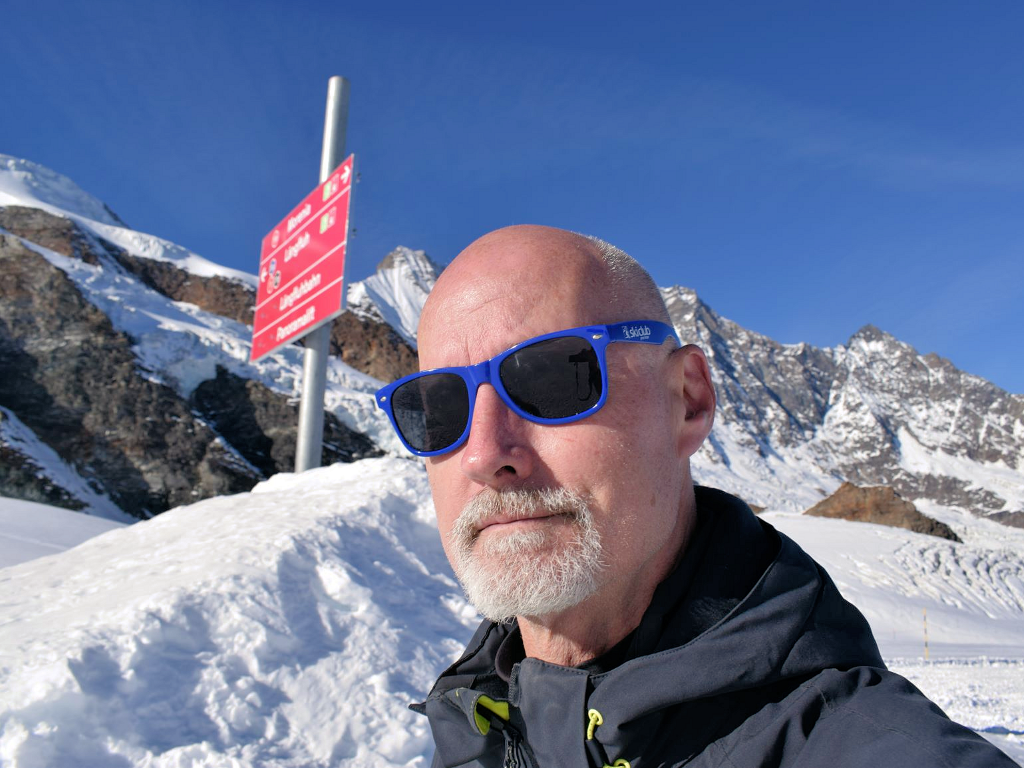
Saas-Fee was the first ski resort I visited in Switzerland, way back in the early 1990s. Since then I have skied over 100 other ski resorts in Switzerland, some many times. I have also skied other resorts in the UK, mainland Europe and North America but Switzerland is my destination of choice for many reasons.
Not least amongst the reasons is that you can ski some decent slopes as early as November in Switzerland. I skied Zermatt last week, Verbier last weekend and Saas-Fee this week. I have written in previous blogs about my recent experiences in Zermatt and Verbier, but here I would like to concentrate on the relative merits of Zermatt and Saas-Fee for early season snow sports.
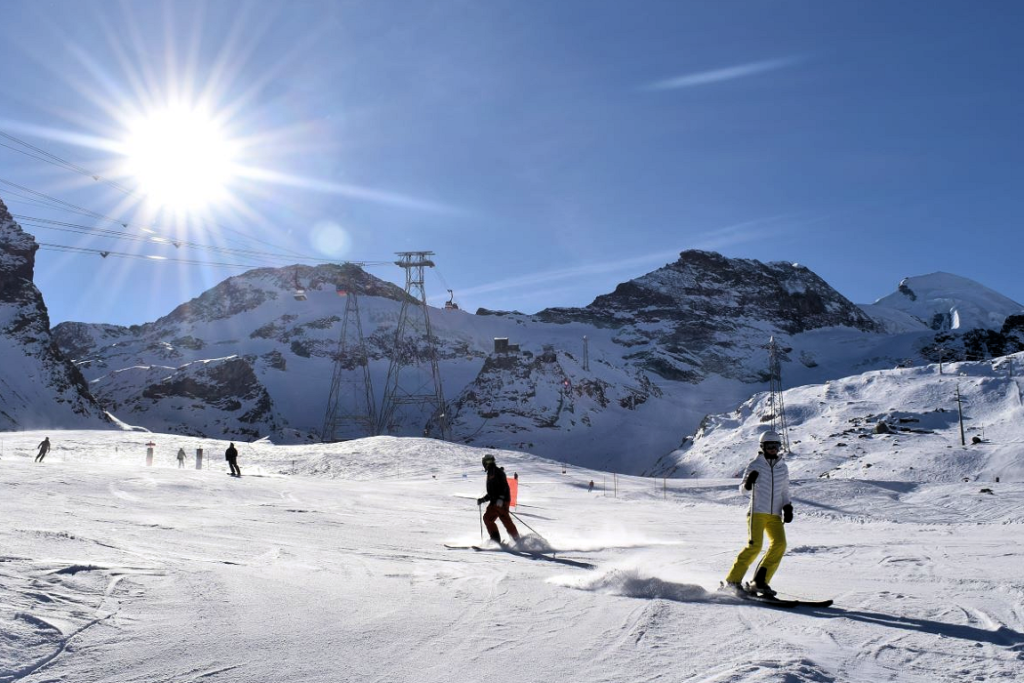
The routes to Zermatt and Saas-Fee diverge at the municipality of Stalden where the Matter Vispa and the Saaser Vispa rivers conjoin. Stalden is a dizzying community of homes on steep valley walls atop which are a number of small ski resorts such as Grächen, Törbel, Bürchen, Unterbäch and Visperterminen – of which Grächen is the largest and most charming. Stalden already has some spectacular bridges but a bypass planned to complete in 2023 will add to the spectacle with seven additional bridges, including the 270m long Chinegga Bridge.
Saas-Fee is the quicker to get to from anywhere you choose to come from, although the last leg from Visp is by bus rather than the train, as is the case for Zermatt. Neither resort allows cars, but the parking lot in Saas-Fee is actually in the village, unlike Zermatt where you have to take the train for the last leg from Täsch if you drive.
Saas-Fee is the highest and largest of four resorts in Saastal – the Saas valley – and the route to the resort passes through one of them, Saas-Grund. Saas-Grund has a creditable 35km of piste in the winter season up to a top station of 3200m. In terms of scale it is somewhat dwarfed by Saas-Fee with its 100km of piste up to 3600m, but it provides some variety if you come to Saastal for a week, often has untracked off-piste when Saas-Fee does not and is less crowded in peak season.
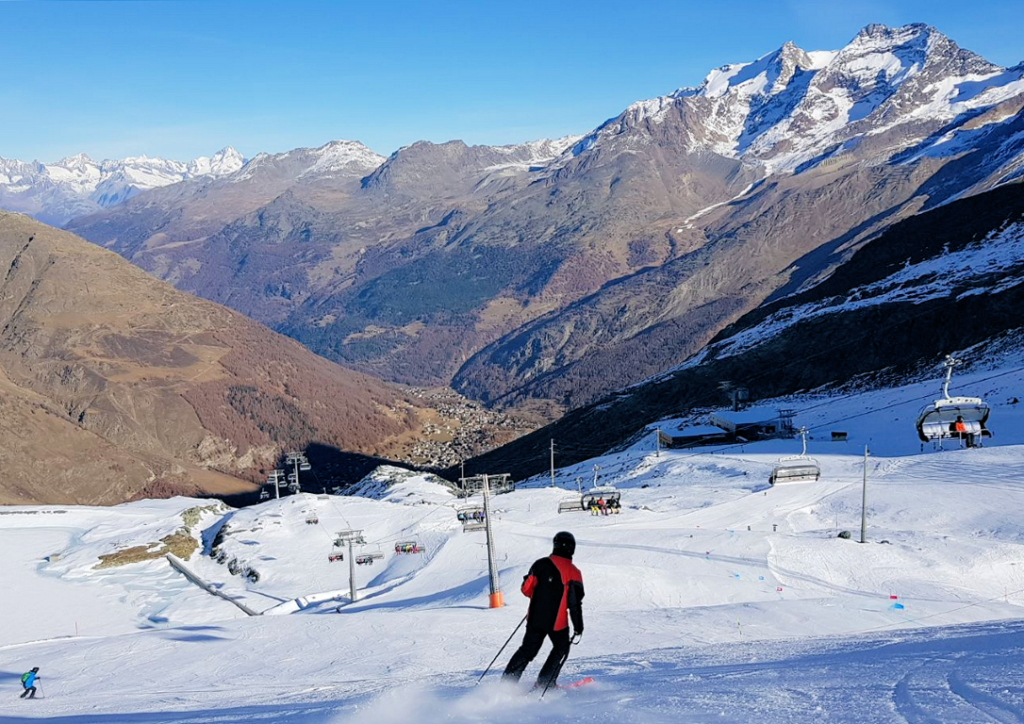
Saas-Fee is not as high or as extensive a resort as Zermatt which, fully open, has an incredible 360 km of piste between 1620 and 3899m. However in November, neither resort is fully open and – in the case of Zermatt – the runs over to Cervinia in Italy which would normally be open are closed because of Covid-19.
Saas-Fee and Zermatt have the highest ski runs in Europe and this is why anyone looking to ski outside the regular season should consider them. Zermatt is open all year round, but summer skiing there is very limited. By mid-November, Zermatt had open 26 km of piste and 10 lifts – limited by the lack of access to Cervinia – whereas Saas-Fee claims 43 km and 12 lifts. On the 28th November the lifts up to the Rothorn and Stockhorn are scheduled to begin operating in Zermatt, opening up at least 100 km of piste.
Both resorts have their upper runs on glaciers, which means off-piste is not an option in those areas, and – since glaciers move – the only lifts on the glaciers are surface lifts. However both resorts currently have chairlift-served runs lower down.
From earlier this month the Covid-19 precautions have resulted in all bars and restaurants being closed until at least the start of December in Valais, the canton where Zermatt, Saas-Fee and Verbier are located. This certainly puts a damper on the apres-ski and mountain restaurant scene, although even without Covid many restaurants and bars are not open in the resorts in November. But we’re here for the skiing and snowboarding, right? Right.

The limited skiing available in Zermatt is gentle reds and blues with a little off-piste whereas Saas-Fee has many more steeper sections. The open areas are reasonably well-connected. To get to the top at Saas-Fee you take two gondolas and an underground train, and the return journey is just the one train from Morenia. For Zermatt the trip up is three cable cars, but you have to take two back – from Trockener Steg and Furi. Since only the most southerly section of Zermatt is open it is also a longer transfer from the train station to the lifts than it is from the garages and bus station at Saas-Fee. In fact, at Zermatt, you might want to take the courtesy bus or a taxi to get to your hotel and to the slopes.
Switzerland has had clear unclouded skies since the start of November and this has worked worse for Saas-Fee than Zermatt. The snow is reasonably good at both, but fresh snow would be welcome and the pistes were icier in Saas-Fee. Both ski areas are north-facing, but Zermatt was bathed in sunshine nearly everywhere whilst the slopes were open, whereas many parts of Saas-Fee, with a low sun behind the Allalin, hardly moved out of shadow all day. I think Saas-Fee would have been a lot better with fresher snow, and I enjoyed my skiing more at Zermatt but I will look to visit again before the end of the month to see how the conditions are holding up.
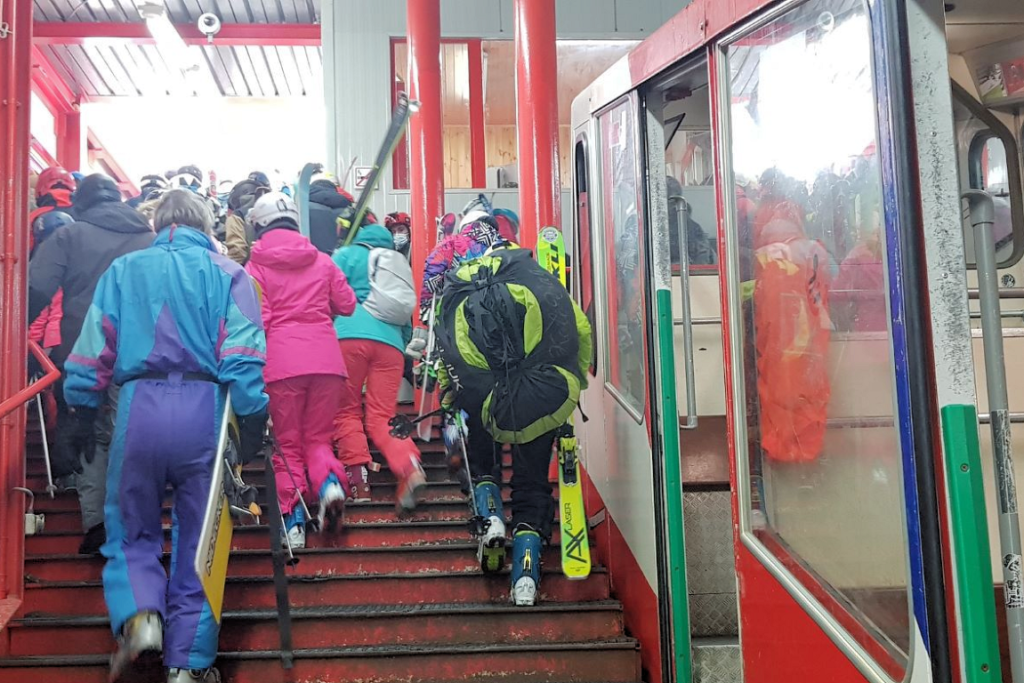
I visited both on weekdays and would expect them to both be busier at the weekend. When I was at the resorts Saas-Fee had more ski racers in training, whereas Zermatt had more ski school instructors under instruction. The runs at Saas-Fee were generally much busier, but at both resorts it was possible to find runs where I was an almost solitary skier. Unfortunately the lifts up and down the mountain at both resorts were quite busy. Masks are compulsory on all lifts.
In broad terms what you are getting in November in these resorts is a similar snow sport experience as you would get mid-week, peak season in a resort like Braunwald or Pizol, albeit at a significantly higher price.
I like Saas-Fee. It is pleasant car-free village, reasonably compact with an excellent lift system and a good range of snow-sure slopes. Zermatt has its downsides but there is probably not a better ski resort on the planet, in my very humble opinion. Both resorts are expensive. Even without the bars and restaurants, ahead of the full season opening, I would on balance choose Zermatt still, but it is a far closer call, especially with Cervinia closed.

